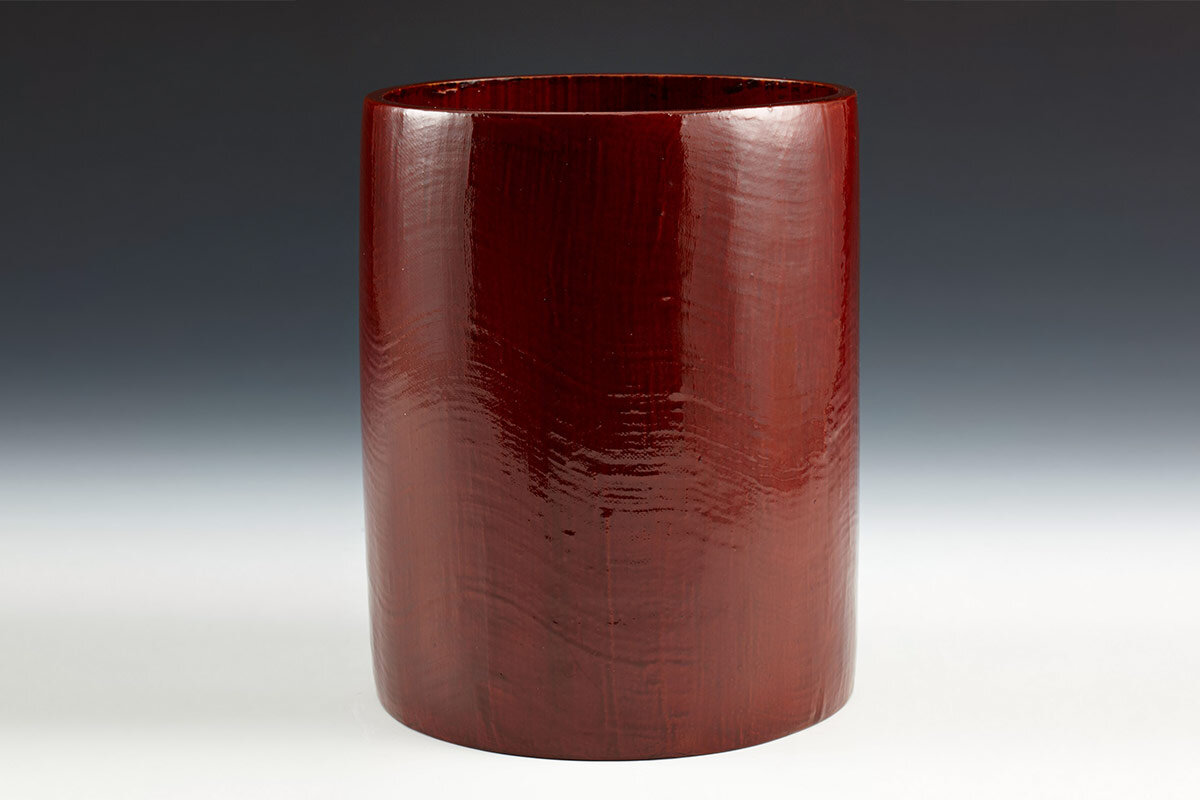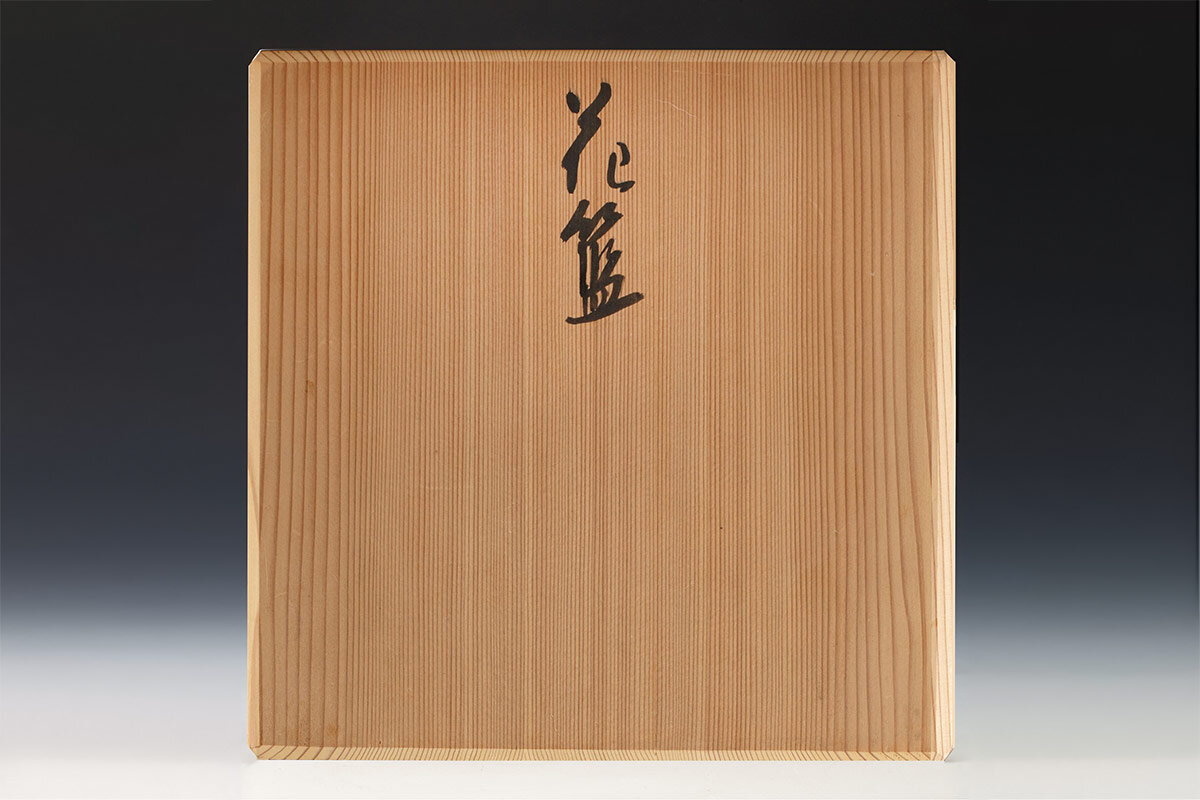BASKETRY
IIZUKA ROKANSAI, FLOWER BASKET TITLED: YOMO NO TAKI OR FOUR WATERFALLS
Flower arranging basket in a squared form with an arcing, loop-style handle. Woven of split, honey-toned bamboo with red-brown, smoked bamboo overlays, and stained split rattan. Signed on the reverse with an incised signature by the artist: Rokansai Saku or Made by Rokansai (Iizuka Rokansai, the go or art name of Iizuka Yanosuke, 1890 – 1958). Early Showa era, circa 1927 – 1934.
With the tomobako or original box, inscribed on the exterior of the lid: Hana Kago or Flower Basket; and on the reverse of the lid titled: Yomo no Taki or Four Waterfalls; and signed: Rokansai Saku or Made by Rokansai, and sealed: Rokansai. Note: the signature and seal are consistent with those illustrated in Iizuka Rokansai: Master of Modern Bamboo Crafts, pages 118 – 119, top register, for 1927 – 1934.
Much of Rokansai’s best work echoes poetically. When young, he wanted to be a painter; when family tradition prevented this, he painted in bamboo. The imagery he chose often seems oblique, suggestive rather than obvious. When he named baskets, the titles give us clues but to understand them one needs to parse a basket’s architecture.
So with Four Waterfalls. Shinto sanctified waterfalls, places of purification and pilgrimage. In both China and Japan the four cardinal directions suggest an ancient, cosmic structure to the universe. With this basket, a formal, squared geometry repeats in the square plaiting of the body, the squared overall form, the handle and the dark, overlaid rim of smoked bamboo.
Against warm, honey-colored weaving, Rokansai overlays rich, smoked bamboo in stark contrast. Five split, and rounded sections aligned together drop from the rim across the front face and rise up the back; five similar sections drop from the side rims and run under the basket. These two sets of overlays do not intersect on the reverse, but instead pass by each other in two planes (as in the architecture of his Senjo series pieces). The overlays plunge like waterfalls, the imagery made stronger by repeating ornamental knots (rice character stitch or kome-no-ji-dome) that stud the verticals like bubbles.
One notices the node placements: on the front face two roughly trimmed nodes on the far right and center vertical stays face upwards like splashing on rock, with the mere line of a node completing the line on the left; on the back face, two roughly trimmed nodes face downwards on the center and far-left vertical stays, with three plain node lines staggered on the remaining stays; on both of the side overlays, more of these restrained, simple node lines texture the verticals.
Lines of simple wrapping (bo-maki) frame and anchor the overlays, repeated at the rim where they alternate on the top of the overlay with sections of insect wrapping (mushi-maki). Ropes of simple wrapping encircle the handle sections at the rim with an almost musical repetition, and then drop down the sides to frame elaborate, ornamental cross knots (juji-musubi), as if to evoke carp climbing a waterfall.
The handle rises as the center overlay on the sides, changing from a hemispherical half-section into a tubular branch of bamboo with a downward pointed node at the top center. About an inch above each rim, nodes detail the sides of the handle, one a roughly cut scallop and the other a restrained horizontal.
With the original tsutsu or water container for the interior of the basket, cut from a massive cylinder of bamboo, the exterior surface smoothed, then lacquered a red-brown color with subtle horizontally brushed wave patterns.
For a basket dated circa 1932 with some similar elements, c.f. Iizuka Rokansai: Master of Modern Bamboo Crafts, number 33.
Iizuka Rokansai, Flower Basket Titled: Yomo No Taki or Four Waterfalls
Artist Name: Iizuka Rokansai
Period: Showa Pre War
Mediums: Bamboo
Form: Basket
Origin Country: Japan
13 ¼” high x 9” wide x 9” deep
This piece is no longer available.








